Security Tips
Beware of financial scams and fraud calls.

Make sure your Anti-Phishing & Anti-Malware Software is updated
to protect your account information against financial malware and phishing attacks at no cost.
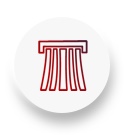
Shred or Securely Store
your printed statements.
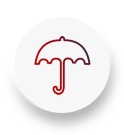
Sharing Is Not Always Caring
never share information such as your username, password, verification number and etc. via emails or pop-up windows and phone calls.

Check Before You Click
Be mindful to check before clicking on links included in emails, SMSes, or pop-ups. Refrain from clicking on links from suspicious email sources.
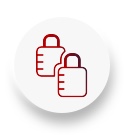
Make It Complicated
your password that is. Create one using a combination of alphabets and numbers, which makes it harder to guess. Make sure you never write your password down and that it's changed regularly.
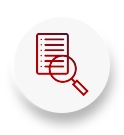
Check & Monitor
your transaction records as often as you can! This way you will notice if there is anything suspicious.

Keep It Private
never use a public computer or an unsecured wireless network (WiFi) when performing online transactions.

Disable the Auto-complete & Auto-save Function
for usernames and passwords.

Clear Your Browser Cache regularly
after every online session, clear your internet cache. Usually this button is under the Internet Options section of your internet browser.
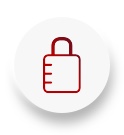
Look Out For the Padlock on Your Browser
when visiting websites that require you to share your security information. Make sure it's there as the icon indicates that the website uses a secure connection.

If You Doubt It, Junk It
no matter how legitimate it may seem, never respond to unsolicited emails.

Vigilance Is the Key
when it comes to your online security. Visit https://www.scamalert.sg/ to find out the latest internet threats.
- You receive an email, SMS or phone call claiming to be from HL Bank, asking you to provide personal financial security information.
- You receive emails or SMS containing a URL internet link which may lead you to a fraudulent unsecured login site.
- You receive emails requesting you to open attachments or free software that may contain malicious software like viruses, spyware and trojans that are designed to monitor, alter, steal, destroy or abuse your corporate and personal data for unintended uses.
- Pop-up messages and/or advertisements asking for personal or corporate financial information are likely fraudulent, so it's better to just close them.
HL Bank has incorporated the following security features:
- 8 – 32 characters of alphabets and numbers User ID for all HLB ConnectFirst customers.
- 8 – 12 characters of alphabets and numbers and is optional to add special characters Password for all HLB ConnectFirst customers.
- HLB ConnectFirst will automatically log off if there is no activity performed after a while.
- HLB ConnectFirst will be deactivated (dormant) if you do not login for 365 days.
- Your ID will be automatically blocked upon 3 unsuccessful attempts to log in.
- Up to 256-bit encryption with 128-bit minimum enabled by EV SSL certificate to secure online transactions.
Security eToken:
- 2 factor authentication which is based on knowledge factor and possession factor.
- Customizable authorization matrix to allow single or multiple authorization.
- Token PIN will be used as an additional method to identify that it is you who is using the token and authorizing the session/transaction in HLB ConnectFirst. Challenge Code will be auto-triggered to the token to authenticate certain online transactions, several settings, registration and reset.
Precaution tips to safeguard the Security Token, Security Codes in order to prevent unauthorised and fraudulent use of HLB ConnectFirst:
- Do not disclose the Security Codes or cause the Security Codes to be disclosed to anyone;
- Do install the necessary anti-spyware and firewalls so that the equipment from which you are accessing to HLB ConnectFirst will not allow recording of the your transaction activities;
- Do always log in to the correct URL (http://www.hlbank.com.sg);
- Do not utilise HLB ConnectFirst through Internet cafes , public computer or an unsecured wireless (WiFi) network ; Change the Password(s) on periodically or when prompted;
- Do memorise the Security Codes and not recording them;
- Do inform our Customer Service at +65 6349 8330 or email us at Call-Centre@hlbank.com.sg immediately if there is any suspicion that any Security Codes has been disclosed to a third party and/or if the Security Token is lost or misplaced by the Customer, to enable HLBS to prevent fraudulent or unauthorised use of HLB ConnectFirst;
- Do sign out of HLB ConnectFirst when stepping away or leaving the access terminal unattended;
- Do use only your access information and devices as designated. Do not share your access with any other person or colleague.
- Do notify the bank immediately should you encounter potential security issues such as loss of security token, suspected unauthorised access etc.
Phishing

Protecting You from Phishing Scam
Online fraud such as phishing scams have been rampant around the world causing undue financial losses and distress that can be avoided with proper education and care. At HL Bank, we are making it a priority to protect you, our valued customers from such threats. With your online security in mind, we hope to equip you below with practical tips on how you can prevent yourself from being a victim.
What is Phishing?
Phishing is an automated form of social engineering used by fraudsters to deceive one to give away sensitive information. Initial phishing emails are designed to entice the recipient to open the email and click on the link provided. The fraudsters use multiple methods to do this including enticing subject lines, forging the address of the sender, using genuine looking images and text and disguising the links within the email.
Phishing is a cybercrime in which a target or targets are contacted by email, telephone or text message by someone posing as a legitimate institution/ individual to lure individuals into providing sensitive data such as personally identifiable information, banking and credit card details and passwords.
Malware Alert

1.0 What is Malware?
Malware is short for Malicious Software. The commonly known malwares are like viruses, worms and trojan horses. Malware is any kind of hazardous software that is installed in your electronic device without your knowledge or consent.
IMPORTANT NOTE:
The Bank will never communicate to you with urgent appeals that your account may be suspended or closed if you fail to confirm, verify or authenticate your company's banking information on the website.
2.0 How does malware infect your computer, smartphones or tablet device?
2.1
From email with Website URL hyperlinks or attachments: Opening an email attachment or clicking on a hyperlink may contain and allow the malware to be installed into your PC, smartphone or tablet devices.
When receiving an email with a hyperlinks or an attachment, if the email was not expected or from someone you don't know, delete it. If the email is from an organization or someone you know and you’re not expecting it or requested for it, be cautious too; do not click on the given hyperlink or open the attachment as instructed , contact the sender to verify beforehand
2.2
From mobile SMS or MMS with website URL or attachments: Same as above emails with hyperlinks or attachments.
2.3
From instant mobile or web messaging with website URL or attachments: Same as above emails with hyperlinks or attachments. Examples of instant messaging are WhatsApp, Twitter and Line.
2.4
Accepting without reading: A user accepts what is prompted on the screen without reading the prompt or understand what it's asking. For example: while browsing a webpage, an Internet advertisement or window appears that says your computer is infected with a virus or malware; you have won a prize; asking to complete a survey or that a unique plug-in is required. Without fully understanding what it is you're getting, you accept the prompt that will install a malware.
2.5
Downloading applications (apps) from a website: Only download programs only from reputable websites and with a valid digital signature. If you are unsure, leave the site and research the website and the software you are being asked to install. If it is OK, you can always come back to site and install it.
Files that don’t have a digital signature or were downloaded from an unknown source should always be treated as dangerous.
2.6
Not running the latest operating system, web browser or application updates: Running a web browser, applications or operating system that is not up-to-date with the latest updates can be a big security risk and can be a way your computer becomes infected.
Some of the updates from your computer, smartphone/mobile, tablet device manufacturer, web-browser or application provider (e.g. Microsoft, Apple, Blackberry, Samsung, LG, Adobe, Google, Mozilla etc), are security updates. Make sure you perform and have the latest updates to minimize the risk of malware infections.
2.7
No antivirus scanner: It's highly that recommended you have some form of antivirus on your computer, smartphone/mobile or tablet devices to help clean it from any infections currently on the computer and to help prevent any future infections.
3.0 How to protect yourself from malware?
3.1
Never click on unknown website link or open an attachment sent via email, SMS, Twitter, WhatsApp or other popular text/instant communication applications, especially when the content is related to financial matters.
3.2
Be a smart surfer when browsing websites that are new to you, be careful of any pop-up window that request for your personal information or prompts you to use certain program.
3.3
Be very selective of the files or programs that you would like to download, always double-check the genuineness of the website and the source, even if it comes from your friends.
3.4
Keep your operating system, internet browser, applications and firewall up to date.
3.5
Install robust anti-virus, anti-spyware and firewall software on your computer and other devices and configure it to update automatically in regular intervals.
3.6
Run full system scan periodically to remove any new found virus or malware, and you must reset your password and clear all browser caches, history, cookies, before you login to your online banking again.
4.0 Take note of any unusual signs on the daily handling of your mobile devices:
4.1
High frequency of apps crash unexpectedly.
4.2
Device battery drains out quickly.
4.3
Pop-up notification or advertisement to install other apps.
4.4
Overall device performance becomes sluggish without apparent reason.
4.5
Outgoing and incoming SMS/calls being disrupted.
5.0 IMPORTANT REMINDER when you’re assessing HLB ConnectFirst:
5.1
Do not respond to any form of pop-up screen or window or additional web pages asking for your personal info and smartphone platform (Android, Windows, etc).
5.2
Do not simply download and install/update any app on your computer or mobile/tablet devices without verification.
5.3
Do not root or otherwise 'Jailbreak' your computer or mobile/tablet devices and avoid side loading (installing from non-official sources).
5.4
Notify the Bank immediately when you came across anything suspicious or unusual web pages asking for personal information when you are about to login to your HLB ConnectFirst.
5.5
You are advised not to proceed with your online banking transactions until your computer or device has been checked and disinfected.

Password Cracking
Password cracking is a common way to retrieve a password by repeatedly trying to guess for the password. The most common method of password cracking is guessing and dictionary attack.
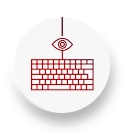
Keystroke Logging
Keystroke logging or more commonly known as key logging is a way of obtaining passwords or info by capturing what user's type. It is a diagnostic tool that comes in the form of software or hardware (i.e. inserted in the keyboard).
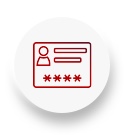
Login Spoofing
Login spoofing is a way of obtaining a user's username and password. The user is presented with the bank's Login page to prompt for the username and password. When the username and password are entered, the information is then passed to the attacker.

Shoulder Surfing
Shoulder surfing as it suggests, is a way of obtaining a user's username and password by peeping.

Spyware
Spyware is a computer software that is often installed into a PC without user's knowledge and usually takes place during user's download of free software, games or subscribing to free online services from the Internet. Once installed, it does not only monitor user's surfing activity but also capable of retrieving any personal and sensitive information that is being transmitted on the Internet before it is sent in the background to interested parties.

Trojan Horse
Trojan horse is a type of malware (malicious software) which allows unauthorised access by attacker to user's computer and more often for the purpose of data theft (e.g. personal information, bank account numbers and password). It can be spread through opening email attachment from unknown person or visit to unknown websites.

Mule Scam
As the result of responding to spam email or job recruitment that offers opportunities to make easy money, a person could fall for a mule scam. This person is known as "money transfer agent" or "money mule" whereby a mule's bank account is used to receive stolen money from phishing victims and such account also act as a transit prior to the funds being sent abroad and later to be withdrawn by the fraudsters.

